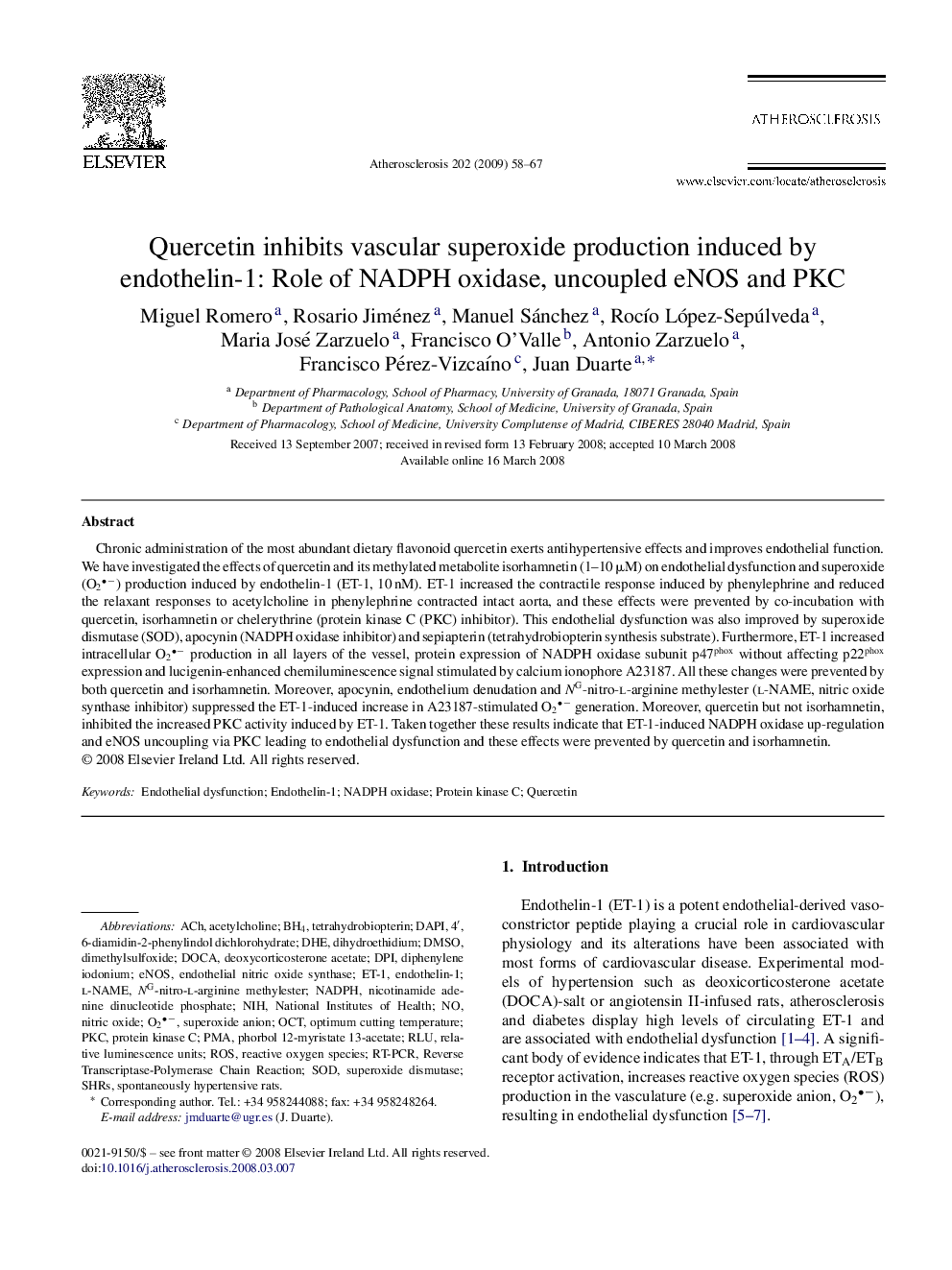| Article ID | Journal | Published Year | Pages | File Type |
|---|---|---|---|---|
| 2893766 | Atherosclerosis | 2009 | 10 Pages |
Chronic administration of the most abundant dietary flavonoid quercetin exerts antihypertensive effects and improves endothelial function. We have investigated the effects of quercetin and its methylated metabolite isorhamnetin (1–10 μM) on endothelial dysfunction and superoxide (O2−) production induced by endothelin-1 (ET-1, 10 nM). ET-1 increased the contractile response induced by phenylephrine and reduced the relaxant responses to acetylcholine in phenylephrine contracted intact aorta, and these effects were prevented by co-incubation with quercetin, isorhamnetin or chelerythrine (protein kinase C (PKC) inhibitor). This endothelial dysfunction was also improved by superoxide dismutase (SOD), apocynin (NADPH oxidase inhibitor) and sepiapterin (tetrahydrobiopterin synthesis substrate). Furthermore, ET-1 increased intracellular O2− production in all layers of the vessel, protein expression of NADPH oxidase subunit p47phox without affecting p22phox expression and lucigenin-enhanced chemiluminescence signal stimulated by calcium ionophore A23187. All these changes were prevented by both quercetin and isorhamnetin. Moreover, apocynin, endothelium denudation and NG-nitro-l-arginine methylester (l-NAME, nitric oxide synthase inhibitor) suppressed the ET-1-induced increase in A23187-stimulated O2− generation. Moreover, quercetin but not isorhamnetin, inhibited the increased PKC activity induced by ET-1. Taken together these results indicate that ET-1-induced NADPH oxidase up-regulation and eNOS uncoupling via PKC leading to endothelial dysfunction and these effects were prevented by quercetin and isorhamnetin.
